Web-Native Projects: An Update on The Factory/Mozilla Collaboration
This year, Mozilla has been working with The Factory youth media program at the Bay Area Video Coalition (BAVC). This is part of our collaboration with the Zero Divide Foundation to foster digital literacy and web design skills in youth media-makers.
I’ve blogged about the program before. In a nutshell: The Factory works with local changemakers to create documentaries, PSAs, and other forms of media to get a message out. Using open video tools in development at Mozilla, we’re going to help The Factory create four innovative video productions that live and breathe on the web. These “web-native” projects will complement the DVD versions of the films.
To prepare the Factory students, we’ve been introducing them to HTML, CSS, and some very basic Javascript. We’ve also been developing some GUI tools to help them create their projects (including the Popcorn Maker, which I’ll blog about next week). Along with these new skills, we’ve been workshopping project ideas to make sure the web-versions of these films are amazing.
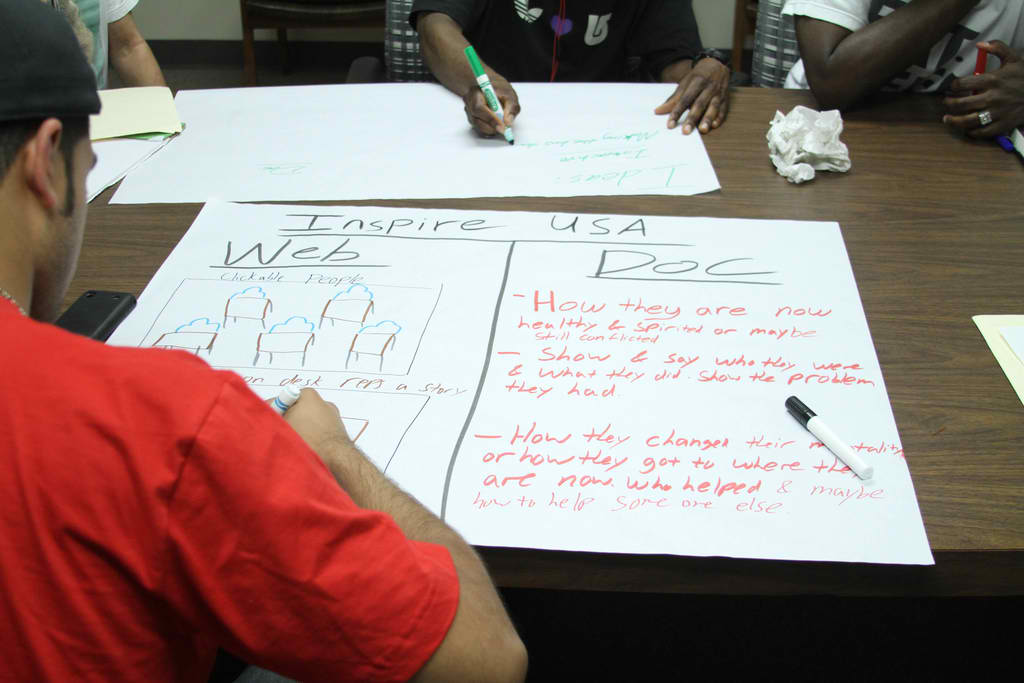
The Inspire USA group at The Factory, prototyping their web-native documentary project
It has been a multi-step process. The Factory Manager, Jason Jakaitis (along with Factory staff members like Ewen Wright) has been helping the groups iterate on their project ideas until they shine. He’s been asking tough questions: How can the Factory projects use the capabilities of the web to reinforce the message of their films? How can they build meaningful audience engagement using new creative techniques?
Here are the near-final concepts for the four projects:
Creative Growth
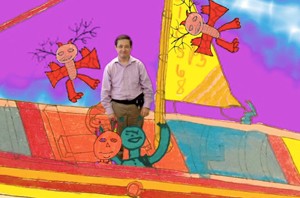
Creative Growth Art Center
The Story: Julian, Stephanie and Matt are making a documentary about the Creative Growth artists studio in Oakland, California – the first art gallery in the country created specifically for artists with developmental disabilities. They want to create a project that shares with the audience the “safe space” that Creative Growth fosters through positive reinforcement and a spirit of inclusion.
The Project: The team envisions a web-native documentary that is preceded by a short questionnaire that prompts the viewer to share their ideas of what is beautiful and who inspires them. After completing the short survey, the documentary begins: it uses interviews with the Creative Growth staff to share the broad tenets of the organization’s philosophy but then has empty place-holders for b-roll that are “filled in” through an automated Google/Flickr image keyword search using the viewer’s answers in the survey. The documentary will then be endlessly variable, tailored to the tastes of the viewer, and in line with the inclusive and open-minded philosophy of Creative Growth.
The Huey P. Newton Foundation
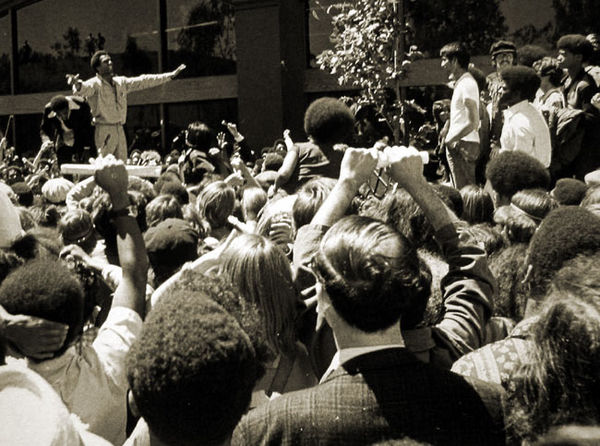
Huey Newton adresses a crowd in Oakland
The Story: Nick, Brian and Patrick recently took the Black Panther Legacy Tour of West Oakland – a four-hour door-to-door history lesson, conducted by former Black Panther Chief of Staff David Hilliard. The tour stops at crucial locations in the Black Panthers struggle and highlights the role that the political party played in fighting for basic civil rights of the African-American community in the late 1960s and early 1970s. The young men were deeply moved by the tour and were appalled by the lack of recognition the City of Oakland had accorded sites of such historical significance.
The Project: The filmmakers have decided to create a virtual “walking tour” to raise visibility of the Black Panthers and their importance to the West Oakland community—this will provide an opportunity for individuals outside of Oakland to learn the history of the movement. Each “stop” on the walking tour will include pan-able Google Street View images of the location as it is now, along with historical stills and Wikipedia articles for additional context. In addition to this core experience, users will be offered unique share & comment links (Facebook) for each leg of the tour.
City Slicker Farms
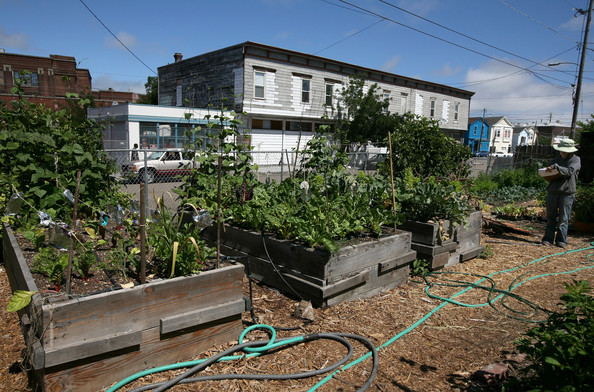
City Slicker Farms plants gardens to renew communities
The Story: Zoe and Jasmine want to tell a story about the West Oakland organization City Slicker Farms, which has spent the last ten years working to promote access to fresh produce and prevent violence by “boosting community” through a series of communal urban gardens and weekly farm stands. The girls are also impressed by CSFs “Backyard Garden” program, in which the organization helps homeowners set up gardens in their backyard and then provides them with seedlings and regular follow-up visits. They want to create a project that brings visibility the organization and shares important information about their efforts, but they also want to make something that reinforces the City Slicker commitment to bringing people together and creating a sense of shared community.
The Project: The team envisions a web-native project (utilizing both Google Maps and YouTube) in which their documentary plays over the center of a Google Map of West Oakland. As the documentary mentions different farm sites that City Slicker Farms has created, pins will drop to indicate their location on the map. These pins will be clickable, linking to a short YouTube-link video portrait of the location. Furthermore, there will be an option for beneficiaries of the Backyard Garden program to drop their own pins where their home gardens are located and share videos or still images of their progress.
Inspire USA
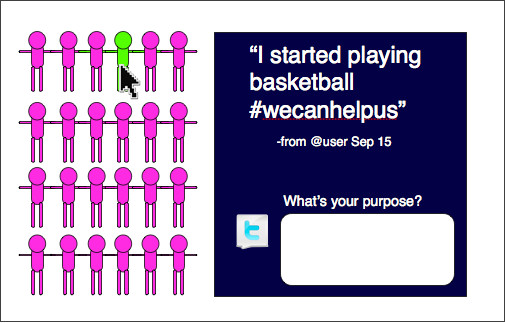
A mockup for the Inspire USA project by the Factory
The Story: Ray, Lauren, and Fifer are working with Inspire USA, a non-profit that helps teens cope with depression & mental illness and live happier lives. The Factory group is creating a series of vignettes to share the stories of survivors. They have settled on four stories submitted by youth who have experienced mental health issues.
The Project: For the web-native version of their project, the emphasis remains on “finding your purpose.” Viewers will be able to watch the vignettes, as well as discovering and sharing positive messages on Twitter. This project will help teens discover that it is not unusual to go through tough times, and that they are not alone.
What’s next?
We’ll be working all through the month of August to help the Factory design and deploy these projects. And we’ll be packaging the tools and learnings from this program to help youth documentarians everywhere to design their own interactive media for the web. Stay tuned!
About this entry
You’re currently reading “Web-Native Projects: An Update on The Factory/Mozilla Collaboration,” an entry on Ben's blog.
- Published:
- 7.23.11 / 1am
- Category:
- Drumbeat, Filmmaking, Mozilla, WebMadeMovies
- Tags:


14 Comments
Jump to comment form | comments rss [?] | trackback uri [?]